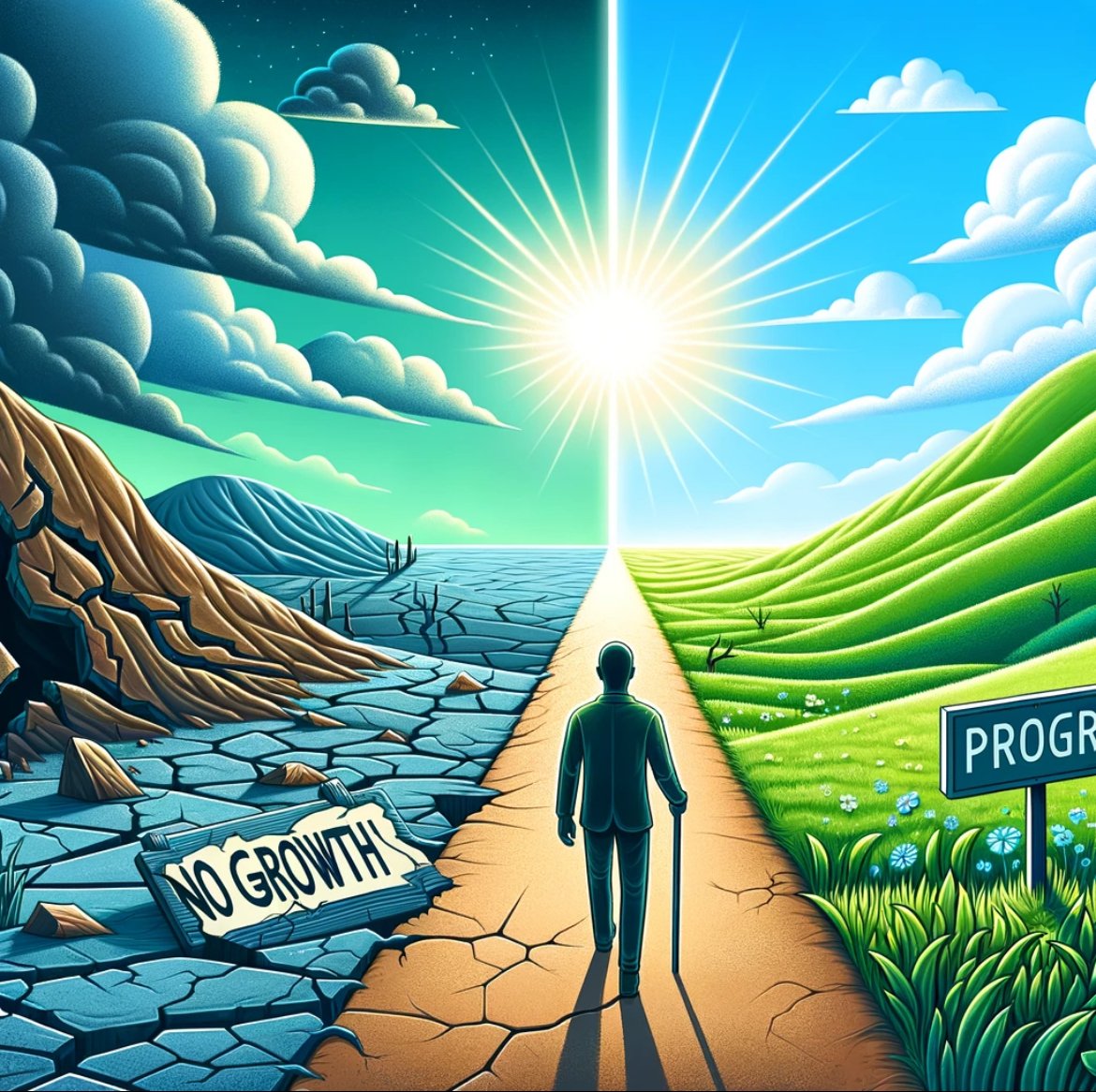Remarkably straightforward, yet undeniably profound.
The transformative moment for me came when I shifted from harboring a fixed mindset to adopting a growth mindset. Although I considered myself to be "optimistic," there were facets of my life where progress had halted.
Upon learning about the Principle of Cause and Effect, it dawned on me that those who sustain a growth mindset over extended periods tend to attain unparalleled success. I wholeheartedly accepted this philosophy and have been steadfast in my commitment ever since!
In the swiftly changing landscape of today's world, our mindset is a critical determinant of our success in both personal and professional spheres.
Here's a breakdown of the core differences:
With a FIXED MINDSET:
Challenges are Avoided: Tends to dodge situations that might reveal shortcomings, preferring the comfort of what's already known.
Easily Discouraged: Quickly overwhelmed by difficulties, viewing them as insurmountable.
Resistant to Feedback: Takes criticism personally and defensively, often rejecting it outright.
Resistance to Learning: Holds the belief that talents are innate and shows little interest in expanding knowledge or skills.
Prefers to Work Alone: Avoids team efforts, possibly out of fear of exposing vulnerabilities.
Dwells on Failures: Fixates on previous setbacks, usually attributing them to external causes rather than self-reflection.
Rigid Objectives: Commits to strict goals and is likely to feel defeated when unable to meet them, instead of revising or adapting these goals.
Contrastingly, with a GROWTH MINDSET:
Welcomes Challenges: Views new tasks and obstacles as chances to grow, venturing out of the comfort zone.
Perseverance: Faces setbacks with resolve, considering them opportunities to learn and advance.
Welcomes Feedback: Sees criticism as valuable input for self-enhancement, not as a personal slight.
Committed to Learning: Eagerly acquires new knowledge and skills, continually seeking to broaden one's horizons.
Seeks Collaboration: Appreciates the value of working together, seeing it as a way to strengthen both individual and shared capabilities.
Overcomes Failure: Recovers from disappointments with optimism, readily adapting to change.
Flexible Goal Setting: Establishes realistic, achievable objectives, adjusting approaches as needed to navigate towards success.
To-Do List for Fostering a Growth Mindset
1. Embrace Challenges:
View challenges as opportunities for growth rather than obstacles.
Set small, challenging goals to help build your confidence in facing larger challenges.
2. Persist in the Face of Setbacks:
Reflect on past setbacks to identify learning opportunities.
Develop resilience by setting contingency plans for potential hurdles.
3. Effort as a Path to Mastery:
Acknowledge that effort is a necessary part of growing and achieving mastery.
Celebrate the effort, not just the outcome, to reinforce the value of hard work.
4. Learn from Criticism:
Approach criticism with an open mind, considering it as feedback for improvement.
Actively seek constructive feedback from peers, mentors, or supervisors.
5. Find Inspiration in the Success of Others:
Instead of feeling threatened by the success of others, use it as motivation to grow.
Engage in communities or groups that support mutual growth and learning.
6. Value the Process Over the End Result:
Focus on what you learn during the process rather than fixating on the success or failure of the outcome.
Document your progress and reflect on your learning journey regularly.
Steps to Cultivate a Growth Mindset
1. Self-Reflection:
Regularly reflect on your mindset and attitudes towards new challenges and failures.
Ask yourself, "What did I learn today?" and "How did I improve?"
2. Change Your Self-Talk:
Shift your internal dialogue from fixed mindset phrases like "I can't do this" to growth mindset affirmations like "I can learn how to do this."
Use the word "yet" to remind yourself that skills and understanding can be developed over time.
3. Set Learning Goals:
Focus on setting goals related to the learning process instead of performance-only goals.
Break down larger goals into smaller, achievable tasks to maintain motivation.
4. Cultivate Curiosity:
Approach new information and experiences with curiosity and an eagerness to learn.
Diversify your learning sources to challenge and expand your perspectives.
5. Embrace Failure as a Learning Opportunity:
Reframe failures as essential steps towards understanding and mastery.
Analyze your failures to extract lessons and strategies for future endeavors.
6. Practice Gratitude:
Acknowledge and appreciate your progress and the support you receive from others.
This can shift your focus from what you lack to what you're gaining in your growth journey.
Remember, developing a growth mindset is a gradual process that requires patience and persistence. Celebrate small victories along the way and continuously seek opportunities for self-improvement.


